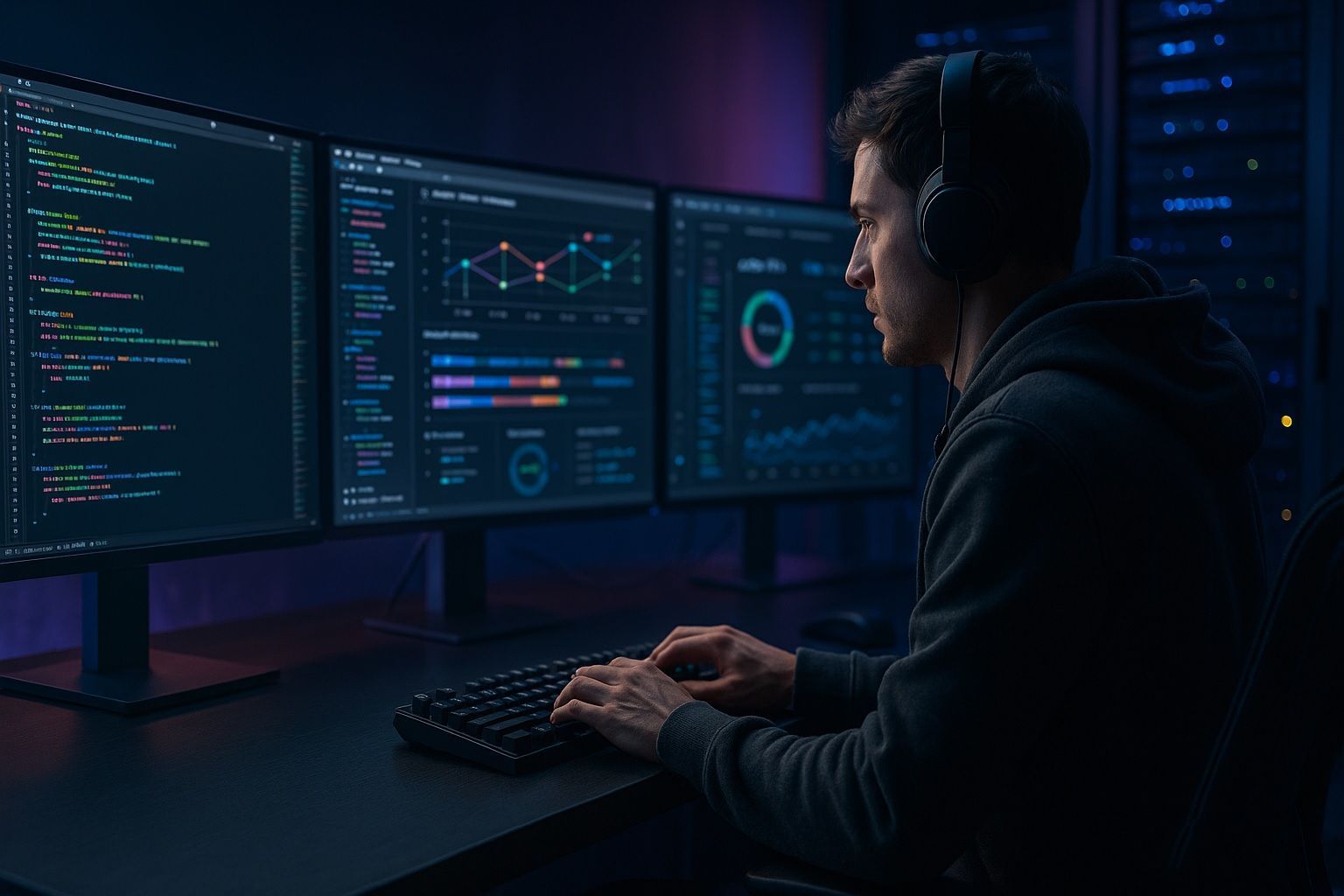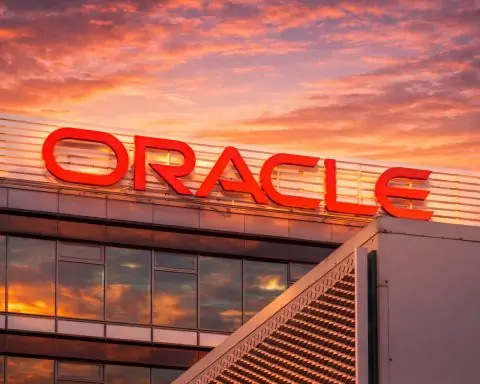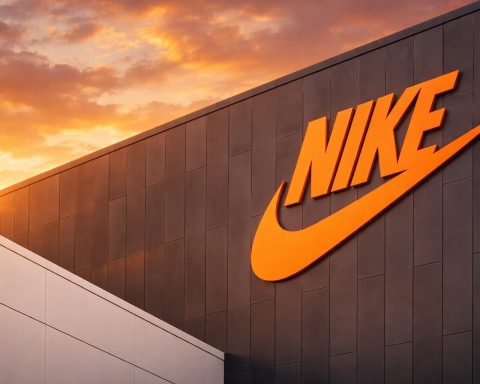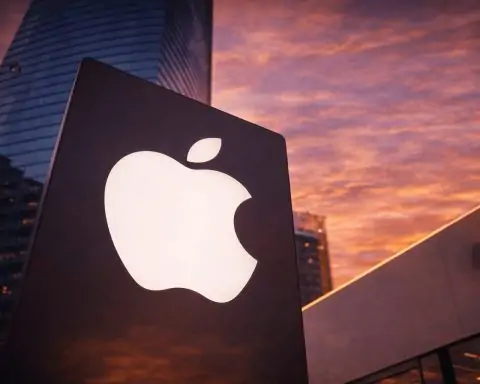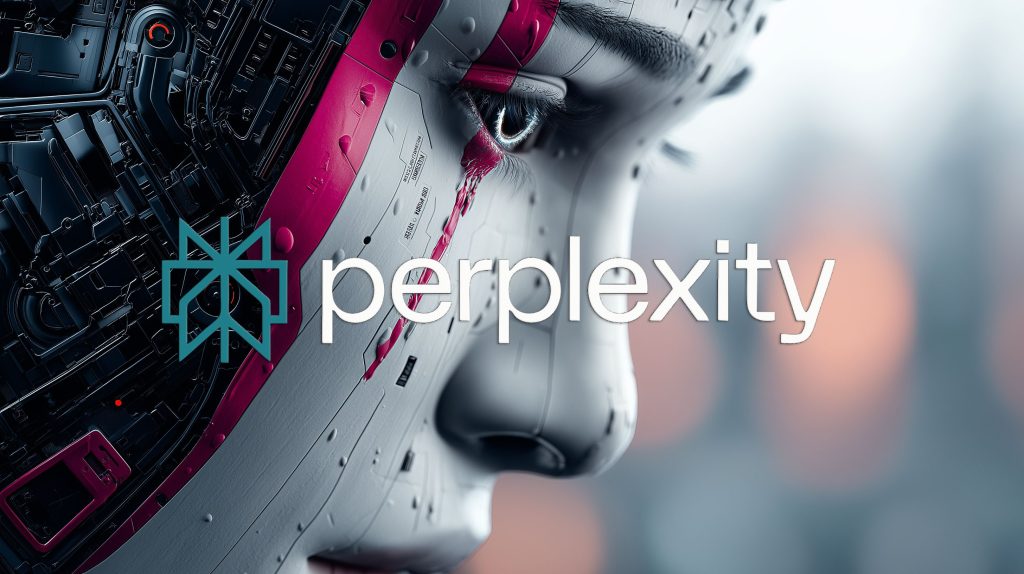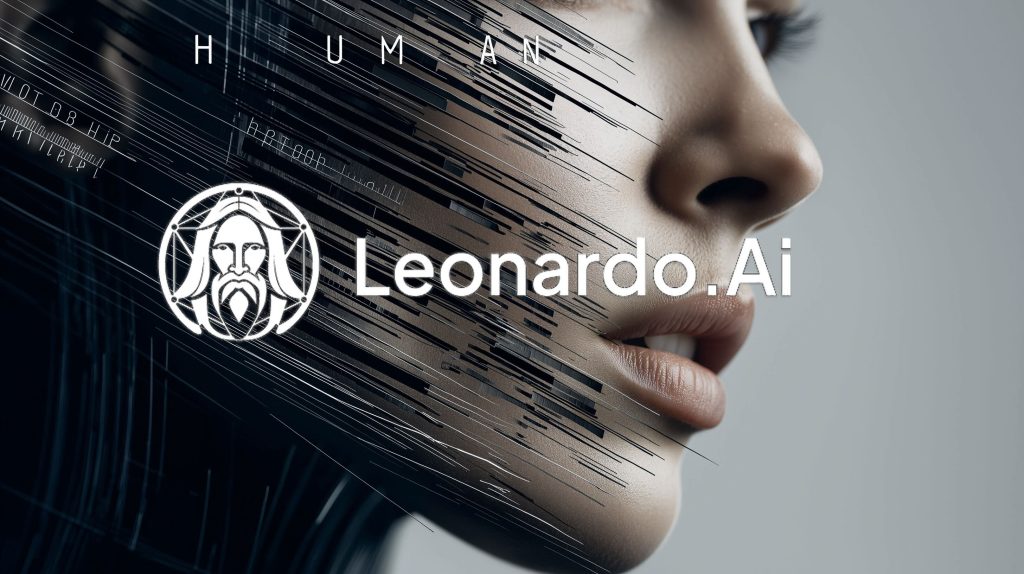- In June 2025, GitLab released version 18 with AI-native features called GitLab Duo, adding AI-assisted code suggestions, test generation, chat-based help, a Maven virtual registry, modular CI/CD pipelines, and built-in security templates (SOC 2 and ISO 27001).
- In mid-2025, Atlassian unveiled AI agents named “Rovo” for Jira and Bitbucket to auto-generate tests and code, review PRs, and assist deployments using the Teamwork Graph data layer.
- In late June 2025, Harness reached GA for Harness AI Test Automation, delivering AI-driven test generation and execution across CI/CD to reduce manual QA bottlenecks.
- In June 2025, Cloudflare announced Cloudflare Containers Public Beta, enabling developers to host containerized apps at the edge on Cloudflare’s network.
- In June 2025, ActiveState began offering free “zero-vulnerability” base container images for common open-source runtimes to improve software supply chain security.
- In June 2025, Payara launched Payara Qube, a fully automated platform for Java EE/MicroProfile apps that handles infrastructure, clustering, scaling, and patching with minimal operations.
- On June 24, 2025, Snyk acquired Invariant Labs to boost its AI Trust Platform with AI-threat research capabilities targeting AI agent vulnerabilities.
- In March 2025, Harness merged with Traceable AI to form what’s described as the most advanced AI-native DevSecOps platform, embedding API protection and runtime defense.
- On June 6, 2025, the US President signed a cybersecurity Executive Order prioritizing Secure Software Development Attestation and NIST SSDF alignment by August 1, 2025, while removing the planned SBOM submission requirement.
- On July 2, 2025, CNCF announced OpenYurt has graduated to Incubation status, signaling growing interest in Kubernetes-based edge DevOps for IoT workloads.
The mid-2025 period has been exceptionally active for DevOps, DevSecOps, and developer tooling. June and early July 2025 saw major product releases, significant market analyses, expert insights on evolving practices, and a flurry of acquisitions and investments across the globe. This report summarizes the key developments – from AI-powered platform updates and open-source innovations to industry trends, funding news, and emerging regulatory influences – that are shaping the DevOps landscape.
Major Product Launches and Updates
AI-Integrated DevOps Platforms: Several leading platforms introduced AI capabilities to streamline the software delivery lifecycle. GitLab 18 was launched with native AI features (“GitLab Duo”), offering AI-assisted code suggestions, test generation, and chat-based help built directly into the platform at no extra cost for Premium and Ultimate users [1] [2]. GitLab 18 also delivered enhancements in artifact management (e.g. a Maven virtual registry), more modular CI/CD pipelines, and built-in security and compliance tooling – from SOC 2/ISO 27001 compliance frameworks to SAST customization and vulnerability dashboards [3] [4]. Similarly, Atlassian announced new AI agents (“Rovo”) for Jira and Bitbucket to automate planning, code generation (with automated test and instrumentation creation), PR review, and deployment troubleshooting [5] [6]. These AI agents leverage Atlassian’s “Teamwork Graph” data layer, giving context across tools to reduce manual toil in coding, testing and operations [7] [8].
CI/CD and DevSecOps Enhancements: Other platforms rolled out updates to improve developer experience and security. GitHub (Microsoft) introduced deeper integration of its Copilot AI and enhanced enterprise features, aligning with Microsoft’s vision of an “agentic DevOps ecosystem” that blends GitHub and Azure DevOps for AI-powered workflows [9]. Azure DevOps and related tools saw incremental updates (e.g. Azure Test Plans adding YAML pipeline support [10]) to bridge gaps between planning, testing, and deployment. Harness, an emerging “AI DevOps Platform,” went GA with Harness AI Test Automation in late June – an AI-driven, end-to-end test automation solution integrated into CI/CD to eliminate manual testing bottlenecks [11] [12]. This reflects a broader trend of embedding AI in every phase of delivery, from code authoring to quality assurance.
DevSecOps and Security Tools: Security-focused updates also featured prominently. Snyk expanded its new AI-based security offerings by acquiring research capabilities (detailed later) and likely integrating them into its “AI Trust Platform” for intelligent vulnerability detection [13] [14]. Tricentis (continuous testing leader) launched “Agentic Test Automation” features, including Remote MCP (Model Context Protocol) Servers, aiming to use AI agents to optimize enterprise software testing [15]. Container and cloud tooling advanced as well: Cloudflare announced Cloudflare Containers (Public Beta), signaling entry into container runtime hosting to support developers deploying at the edge [16]. ActiveState extended its secure open-source supply offerings by providing “vulnerability-free” base container images, enabling teams to start with minimal known security issues in their containerized apps [17]. In the Java ecosystem, Payara launched Payara Qube, a fully-automated, “zero-maintenance” platform for enterprise Java application deployment [18] [19] – illustrating continued investment in easing deployments for specific tech stacks.
Table: Selected Product Releases (June 2025)
| Product/Platform | Key Updates and Features (June 2025) |
|---|---|
| GitLab 18 (DevSecOps) | AI-native features (Duo code suggestions, chat); built-in artifact & package registry; enhanced CI/CD pipeline modularity; new security compliance templates (SOC2, ISO27001), SAST tuning, vuln dashboards [20] [21]. |
| Atlassian DevOps | AI agents “Rovo” for Jira/Bitbucket to auto-generate tests, code, PRs and handle deployments; Teamwork Graph for context sharing; integrated CI/CD and incident management in Jira/Opsgenie [22] [23]. |
| Harness (AI DevOps) | GA of AI Test Automation – AI-driven test generation and execution across CI/CD; aims to cut manual QA delays and speed releases [24] [25]. |
| Cloudflare Containers | Public Beta of container hosting on Cloudflare’s network, enabling devs to run containerized apps at edge locations with Cloudflare’s scalability [26]. |
| ActiveState Secure OSS | Free “zero-vulnerability” container images for common open-source runtime environments (with known CVEs remediated) to improve software supply chain security [27]. |
| Tricentis (Testing) | Agentic Test Automation with AI-driven test agents (Remote MCP Servers) to intelligently prioritize and execute tests, reducing test cycle time [28]. |
| Payara Qube (Java) | Automated platform for Java EE/MicroProfile apps, handling infrastructure, clustering, scaling and patching with minimal ops effort [29]. |
Market Trends and Analyst Insights
DevOps Platforms Wave: In June, Forrester Research released its influential DevOps Platforms Wave (Q2 2025), highlighting the industry’s top integrated DevOps solutions. Several vendors were named Leaders, underscoring a market shift toward end-to-end platforms that marry speed with security. Atlassian, for instance, was recognized as a Leader for evolving Jira/Bitbucket into a unified DevOps platform with strong Vision and Innovation – scoring 5/5 in criteria like roadmap and AI integration [30]. Atlassian credits its “AI-infused roadmap” for bringing “developer experience, compliance, and reliability together” [31]. GitLab was likewise dubbed “the most all-in-one of the all-in-one solutions” by Forrester, ideal for enterprises standardizing on one toolchain [32]. GitLab earned the highest possible scores in Day-0 experience, CI/CD, developer tooling, security integration, AI infusion, and AI risk mitigation – reflecting its strategy of providing a single DevSecOps platform that doesn’t force trade-offs between velocity and security [33] [34]. Microsoft’s GitHub + Azure DevOps also achieved Leader status, with Forrester noting Microsoft’s “vision for an agentic DevOps ecosystem” delivering AI-powered developer experiences to help teams “build better software, faster” [35]. Harness joined the Leaders’ ranks as well, with Forrester praising its pervasive AI throughout the SDLC, focus on security, and even cloud cost management – “a strong mix of business value and developer experience,” according to the report [36]. All these platforms are racing to infuse AI and automation, validating that “AI-powered DevOps” is now a key differentiator in the market.
Growth Forecasts: Analysts project robust growth for the DevOps and DevSecOps tooling market. The global DevOps market is on track to expand from roughly $12.5 billion in 2024 to $15+ billion in 2025 (~20% year-over-year) [37]. Longer-term forecasts indicate the market could reach $38–$47 billion by the end of the decade [38] [39], implying sustained ~25–30% CAGR as more organizations adopt DevOps practices at scale. A significant driver of this growth is AI and automation. A dedicated study on Generative AI in DevOps predicts an explosion from $1.9B in 2024 to over $9.5B in 2029, and nearly $47B by 2034, as AI-driven tools become standard across testing, monitoring, deployment and more [40] [41]. That equates to ~38% annual growth in the AI+DevOps segment, outpacing the broader DevOps market. Notably, North America currently leads in AI-DevOps adoption, but the fastest growth is expected in Asia-Pacific and the Middle East (projected ~45% CAGR through 2029) [42] [43]. The space is still fragmented – even the largest player (Microsoft) holds only ~2.5% share – with many startups driving innovation [44]. This fragmentation underscores the opportunity for consolidation and new entrants, especially those leveraging AI, to capture market share in the coming years.
Platform Engineering & Developer Experience: Industry analysts and thought leaders also emphasized trends in platform engineering and developer productivity. At PlatformCon 2025 (June), experts noted a “reconciliation” between DevOps and platform engineering: internal platform teams are now seen as complementary to DevOps, providing “golden paths” and self-service templates that make developers more efficient [45] [46]. Rather than “DevOps vs Platform Engineering,” organizations recognize that a strong Internal Developer Platform can be a force-multiplier for DevOps, reducing cognitive load and freeing DevOps engineers to focus on acceleration over infrastructure yak-shaving [47] [48]. Observability was singled out as a foundation – “You can’t automate what you can’t see,” and high-fidelity telemetry is now table stakes for both human and AI ops decisions [49]. Meanwhile, a 2025 DevOps maturity survey (650+ engineering leaders) revealed that many firms still struggle with developer experience and efficiency, indicating room for growth. According to the Harness-sponsored report, 67% of teams cannot even spin up dev/test environments within 15 minutes, 61% say code reviews take over a day, and 50% of application deployments still involve manual steps [50] [51]. These inefficiencies contribute to an “epidemic of engineering inefficiency… burning millions of dollars in developer productivity while… exposing [organizations] to significant security and operational risks,” as one CTO noted [52]. The study’s takeaway aligns with market trends: investing in platform-centric DevOps solutions and automation (CI/CD, testing, IaC, etc.) is key to closing these gaps [53]. In short, both analysts and practitioners are urging companies to improve developer experience (DevEx) and automation – not only to boost output, but to reduce risk in an era of complex toolchains.
Expert Commentary and Analysis
Industry experts provided valuable commentary on best practices and emerging paradigms in DevOps and DevSecOps during this period. A recurring theme was AI’s transformative impact on software delivery. “AI and automation are not just buzzwords; they are essential tools that can streamline operations, enhance productivity and drive innovation,” wrote Tony Barbagallo in a Tech Council post [54]. He noted that AI can now automate tedious tasks like code reviews, bug detection and testing – significantly reducing the time and effort for these activities while often catching issues human developers miss [55]. This speeds up release cycles and improves software quality. In operations, AI-driven monitoring can analyze logs and metrics at scales impossible for humans, proactively flagging anomalies or predicting failures so teams can fix issues “before they escalate into critical problems” [56]. Several experts highlighted that while full No-Ops is still aspirational, AI is already excelling at incident response bots, intelligent CI/CD pipelines, and infrastructure tuning. At PlatformCon, a panel from Nvidia, Google and others described how LLMs and autonomous agents are automating the “last mile” of toil – e.g. ops bots that diagnose incidents from observability data, or AI systems that generate compliant Terraform code for infrastructure as code [57] [58]. Sedai’s demo of a “Self-Driving Cloud” showed an agentic AI adjusting cloud resources for cost/performance optimizations with minimal human input [59]. The takeaway: AI is acting as the “great convergence engine”, bringing development, operations, and security closer by handling cross-cutting concerns (testing, monitoring, optimization) and forcing teams to rethink how they collaborate [60].
Security experts likewise stressed that DevSecOps must evolve alongside these trends. As one Forbes Technology Council piece argued, when done right “security can make DevOps easier” and even become a strategic enabler rather than a bottleneck (e.g. preventing costly breaches means more resources for innovation). The integration of AI into security is both an opportunity and a necessity – Snyk’s CEO Peter McKay observed that securing modern applications increasingly means addressing “agentic AI vulnerabilities” and novel threats, not just traditional bugs [61] [62]. This led Snyk to launch an AI Trust platform and acquire specialized research talent (Invariant Labs) to help customers tackle risks like AI tool “poisoning” and malicious prompt injection [63] [64]. “We’re accelerating our ability to neutralize the next generation of agentic AI threats before they reach production,” said Snyk’s Chief Innovation Officer, emphasizing a proactive stance [65]. Similarly, Sonar (maker of SonarQube) signaled that securing code now requires looking beyond first-party code – its late-2024 move to acquire Tidelift was aimed at analyzing open-source dependencies for vulnerabilities and integrating that into the developer workflow [66] [67]. With supply chain attacks rising, experts maintain that DevSecOps practices like routine code scanning, dependency auditing, and developer security training are more critical than ever. Yet surveys show less than half of organizations consistently embed security scans or tests into CI pipelines [68] [69]. This gap was noted with concern: “In an era where software supply chain attacks make headlines weekly, these gaps represent existential threats,” warned Harness Field CTO Martin Reynolds [70] [71]. The consensus among thought leaders is that security and compliance must be built-in from the start, ideally via automated tools and guardrails that developers use without impeding their speed. Techniques like “secure-by-design” frameworks (e.g. NIST’s SSDF), policy as code, and AI-assisted security testing are gaining traction as ways to ensure that rapid development doesn’t open doors for attackers [72] [73].
On the cultural side, the DevOps community is refining its understanding of roles and collaboration. The once-hyped “DevOps vs Platform Engineering” debate has cooled – experts like Kelsey Hightower remind us that “DevOps is a culture and set of practices; platform engineering is an organizational response to scale”, and the two now operate in tandem [74]. Hightower quipped that “Platforms aren’t magic APIs. They’re agreements that make engineers faster at delivering business value” [75] – highlighting that internal platforms provide the paved roads (standardized environments, templates, guardrails) that free developers to focus on features rather than reinventing infrastructure. Another trend is the elevation of Observability and monitoring in the DevOps value chain. Many discussions noted that advanced automation (especially AI-driven) only works if you have rich telemetry: logs, traces, and metrics to feed the algorithms. High-quality observability has become “the new gravity well”, pulling together DevOps, SRE, and security – whether it’s for feeding an AI ops engine, debugging ephemeral microservices, or demonstrating compliance, “you can’t automate what you can’t see”* [76]. As a result, tools like OpenTelemetry and automated monitoring solutions were heavily showcased in conferences, and companies are baking observability into their platform blueprints by default. All these expert perspectives reinforce a common narrative: DevOps in 2025 is about smarter automation, deeper integration (including security and AI), and improving the developer experience, all without losing the human-centric culture that underpins DevOps success.
Emerging Technologies and Open-Source Developments
Innovation in DevOps and developer tooling is increasingly coming from open-source projects and community-driven initiatives worldwide. In late June, the Linux Foundation launched a new project called Agent⁺Agent (A2A) Protocol – an open standard (originally contributed by Google) for secure agent-to-agent communication and collaboration [77]. This protocol aims to set guidelines for how autonomous software agents (like AI-driven bots, deployment agents, etc.) can safely coordinate actions, authenticate, and share data. As the use of “AI agents” in DevOps grows (for tasks like automated incident response or environment management), the A2A project is an important step to ensure interoperability and security in multi-agent systems. On the cloud-native front, the Cloud Native Computing Foundation (CNCF) announced that OpenYurt, a Kubernetes-based edge computing platform originally from Alibaba, has graduated to Incubation status. OpenYurt focuses on managing IoT/edge workloads with Kubernetes, and its elevation within CNCF (as of July 2, 2025) signals increasing global interest in edge DevOps – particularly relevant for regions with large edge deployments (e.g. manufacturing in Asia, smart cities, etc.). Another CNCF-related development was a blog on Microcks + Dapr integration (June 25), demonstrating simplified local microservice development by using Microcks (an open source API mock/test tool) with Dapr’s components [78]. This highlights the ongoing efforts to streamline cloud-native app dev/testing using open standards and local emulation of cloud services.
In the AI domain, open source is also playing a role. Google made a splash by open-sourcing Gemma 3n, the latest in its family of multimodal AI models, and announcing it “fully available for developers” with support for image, audio, video, and text processing [79] [80]. While not directly a DevOps tool, the availability of powerful open AI models (and platforms like the updated Google Colab, which was relaunched in June as an “AI-first” coding environment [81]) gives developers new building blocks to integrate AI into their applications and workflows. This has knock-on effects for DevOps teams in managing and deploying AI-centric applications. Likewise, Google’s Imagen 4 text-to-image model entered beta availability via Google’s AI Studio and API [82], expanding the toolkit for developers building generative AI features.
Another notable open-source release was Pythagora, an all-in-one AI development platform that launched on June 24. Pythagora’s premise is enabling users to “build and deploy full-stack applications from a single prompt” [83] – essentially a generative AI that can scaffold an entire application (frontend, backend, database) based on instructions. This kind of tool blurs the line between coding and AI, and while still early, it could hint at a future where DevOps pipelines include AI-generated application components. If such platforms mature, DevOps engineers might handle more validation and oversight of AI-generated code rather than writing all components from scratch, introducing a new dynamic in workflows.
Open-source security and DevSecOps also saw advancements. Backslash Security (a cloud-native AppSec startup) introduced a free “MCP Server Security Hub” resource in June [84]. This is essentially a knowledge hub related to Model Context Protocol servers (MCP servers) – which are associated with AI agent operations – providing guidance for “vibe coders” (developers leveraging AI agents) and security teams to secure these new AI-driven workflows [85]. The fact that terms like MCP vulnerabilities and agentic AI risks are entering the lexicon (with backing from both community resources and acquisitions like Snyk’s) shows how quickly the open source security community is mobilizing around AI-era threats. Additionally, ActiveState’s move to support low-to-no vulnerability container images for free is rooted in the open-source ethos – taking public base images and rebuilding them with vulnerabilities patched [86]. This can be seen as a community contribution to safer open-source consumption, aligning with emerging supply-chain security standards (e.g. SLSA, CIS benchmarks).
Finally, global events continued to foster collaboration: DevOpsCon Berlin 2025 (June 16–20) and KubeCon + CloudNativeCon China 2025 (June 10–11) provided forums for sharing these innovations. At the latter, many CNCF project maintainers from across Asia showcased tools and best practices tuned for cloud-native DevOps at scale. The CNCF also announced it will host its first-ever KubeCon in Japan in 2025 [87] [88], reflecting the globalization of DevOps knowledge and the spread of cloud-native technologies beyond traditional hubs. In summary, open-source projects – whether enabling edge computing, simplifying microservice development, or addressing AI and security – are at the heart of DevOps progress, and mid-2025 brought a wave of such community-driven advancements.
Acquisitions, Mergers, and Funding Highlights
The period saw active M&A and funding as companies vie to build comprehensive DevSecOps offerings:
- Snyk acquires Invariant Labs (June 24): In one of the most talked-about deals, devsecops leader Snyk bought Invariant Labs, an AI security research startup, to bolster Snyk’s new AI-based security capabilities [89]. Invariant Labs specializes in safeguards against “emerging AI threats” – their researchers coined terms like “tool poisoning” and “MCP rug pulls” for novel attack vectors in AI agents [90] [91]. Snyk’s CEO said this acquisition integrates into Snyk’s AI Trust Platform and lets them offer “a single platform to address both current application and agentic AI vulnerabilities” [92]. This move underscores the convergence of software security with AI: securing code now means securing AI-generated code and AI systems as well. With Invariant’s team and tech (like their Guardrails system for LLM/agent security) [93], Snyk plans to help customers proactively defend against threats like unauthorized data exfiltration by AI agents and AI-driven supply chain attacks [94] [95].
- Harness merges with Traceable AI (completed March 2025): Earlier in 2025, Harness – known for CI/CD and feature management – merged with Traceable, an API security firm, to create what they touted as “the most advanced AI-native DevSecOps platform” [96] [97]. While pre-dating June, this merger’s impact is being felt now. Harness can now offer integrated application security (API protection, runtime defense via Traceable) natively alongside software delivery. The combined platform “eliminates the need for separate security and software delivery solutions” by embedding security at every stage of development and deployment [98]. This trend of DevOps toolmakers joining forces with security specialists continued in Q2: for instance, Security Compass (Toronto-based) acquired Devici (a threat modeling tool vendor) in June to enrich its secure-by-design offerings [99]. And Gearset (a UK-based DevOps platform for Salesforce) acquired Clayton, a code analysis startup for Salesforce, to integrate static analysis and security checks into its CI/CD for low-code environments [100]. These deals reflect a DevSecOps consolidation: vendors are expanding via acquisition to cover all stages of code, config, and runtime security.
- SonarSource to acquire Tidelift (announced Dec 2024, closing 2025): As mentioned, Sonar’s planned purchase of Tidelift brings open-source component intelligence into Sonar’s code quality platform [101]. By H1 2025, the combined company has been outlining how they will provide developers with awareness of known vulnerabilities in the OSS they use, in addition to scanning their proprietary code. This aligns with the enterprise demand for Software Composition Analysis (SCA) integrated with development pipelines – a space where other players like GitLab and GitHub have also invested.
- Cellebrite acquires Corellium (June 5): In a notable deal intersecting DevSecOps and mobile, digital forensics firm Cellebrite announced plans to acquire Corellium, a startup famed for its Arm-based virtual mobile device platform [102]. Corellium’s tech is used for mobile app testing, security research, and even “smart device DevSecOps” (providing virtual iOS/Android devices for CI pipelines). This acquisition, bridging an Israeli-American forensics company with a US mobile virtualization innovator, highlights the value of virtual testing environments in DevSecOps – especially as mobile and IoT devices proliferate. It could lead to more integrated solutions for mobile app CI/CD with built-in security analysis (Cellebrite referenced “unmatched innovation in… Smart Device DevSecOps” as a goal) [103].
- Funding Rounds: Investment in DevOps and DevSecOps startups remained strong. For example, Sydney and San Francisco-based Circumvent (cloud security posture automation) raised $6 million in seed funding in June [104], and Israel saw a resurgence of tech funding with over $1.6B across startups in June – some of which went to cloud and DevOps tooling companies [105]. One high-profile venture was Campfire (an AI-driven ERP startup, not purely DevOps but indicative of AI’s enterprise momentum) raising $35M Series A led by Accel on June 30 [106]. Meanwhile, more relevant to developers, companies like System Initiative – which is reimagining DevOps automation – recently came out of stealth with funding (it had raised $18M prior) and launched a private beta of its modern, collaborative infrastructure automation platform [107]. And in a sign that even “traditional” DevOps companies continue to attract capital, both CloudBees and Puppet (CI/CD and infrastructure-as-code pioneers) secured over $100M combined in new funding (per SDXcentral) as they pivot to cloud and AI strategies [108].
Overall, the M&A and funding activity underscores a convergence in the DevOps tool space: CI/CD vendors acquiring testing or security startups (CloudBees’ 2024 pickup of Launchable for AI test optimization is one example [109] [110]), security companies merging with delivery platforms, and significant investor appetite for solutions that address the pain points identified earlier (manual processes, security gaps, etc.). We are likely to see an accelerated rollout of integrated DevSecOps platforms through the remainder of 2025, driven by these combinations of talent and technology.
Security and Regulatory Updates
Secure Software Regulations: Mid-2025 brought some shifts in the regulatory landscape for software security, particularly in the United States. On June 6, President Trump signed a new cybersecurity Executive Order (EO) aimed at “sustaining and strengthening” national cybersecurity efforts [111]. This EO has direct implications for DevSecOps practices among federal contractors and suppliers. Notably, it updates the requirements for federal software procurement by emphasizing the Secure Software Development Attestation (self-certifying adherence to secure development practices such as NIST’s SSDF) [112]. The EO actually removed a planned mandate for SBOM (Software Bill of Materials) submission and related artifact validation in the Federal Acquisition Regulation, deeming prior SBOM requirements “unproven and burdensome” [113]. Instead, the focus is on a more streamlined attestation process: the Commerce Department was directed to work with industry on guidance for aligning with NIST 800-218 (SSDF) by August 1, 2025 [114]. In essence, the U.S. government signaled a slight course correction – still prioritizing software supply chain security (the EO reaffirms that as a goal [115]) but seeking to reduce compliance overhead by simplifying how vendors assert their secure development practices. The EO also promotes use of AI for cybersecurity defense and even calls for exploring “rules-as-code” to encode cyber policies in machine-readable forms, reflecting modern approaches to automation in compliance [116] [117].
For contractors and software producers, this means in the near term they must be ready to attest to following secure development standards (like having code scanning, dependency checks, threat modeling, etc. in their pipelines) even if they won’t have to submit SBOMs for every update. Industry experts caution that while the paperwork might be reduced, the responsibility to actually implement DevSecOps measures is undiminished – if anything, it will be more on companies to internally ensure and demonstrate compliance when asked [118] [119]. One immediate effect is many organizations are revisiting their software supply chain security postures now, anticipating that either the U.S. or other jurisdictions will tighten enforcement on vulnerabilities in delivered software [120] [121]. Indeed, the SonarSource commentary pointed out it’s “only a matter of time before more stringent regulations require… ensuring routine vulnerabilities don’t reach production”, urging firms to get ahead by adopting rigorous DevSecOps now [122] [123].
Global and Industry Standards: Outside the U.S., the EU Cyber Resilience Act (CRA) moved closer to reality. The EU formally adopted the CRA regulation in early 2025 (Regulation EU 2024/2847) with phased implementation dates – it introduces mandatory cybersecurity requirements for hardware/software products (including IoT and software “products with digital elements”) [124]. While full enforcement of the CRA will roll out over a few years (core provisions by 2026, and many requirements by 2027 according to EY analysis [125] [126]), the awareness of these upcoming rules is driving companies worldwide to align with standards like ISO 27001, ETSI EN 303 645 (IoT security), and of course NIST SSDF which many see as a blueprint for CRA technical norms. Additionally, sector-specific regulations continue to emphasize DevSecOps: for example, PCI DSS 4.0 (for payment systems) has new controls effective in 2025 that essentially mandate SBOMs and secure software inventories for in-scope applications [127]. And the U.S. Department of Defense launched its SWFT (Software Factory) initiative on June 1, 2025, requiring SBOMs and stricter DevSecOps processes for all software in defense contracts [128]. In short, while there’s some debate on the how (attestations vs SBOMs), the what is clear globally: regulators want proof of secure development and supply chain risk management. DevOps teams are increasingly tasked with generating that proof – via evidence from CI/CD pipelines (tests, scan results), compliance automation, and documentation of controls.
Zero Trust and Beyond: The broader cybersecurity climate also influenced DevSecOps priorities. Following high-profile breaches and even reports of a ransomware-related fatality in healthcare [129] [130], organizations accelerated adoption of zero-trust architectures. A late June report documented how zero-trust moved from buzzword to baseline, with many vendors launching products to enforce least privilege access and continuous verification in application environments [131]. For DevOps, this means more integration of zero-trust principles in tooling – e.g., ephemeral dev environments with zero-trust network access (ZTNA) by default, CI pipelines requiring strong identity for every service and API call, and increased use of secret management and encryption. Cloud providers and startups are delivering these capabilities as part of developer platforms, given the “sharp focus on zero trust” noted in early summer 2025 [132].
Lastly, the human aspect of security is getting attention in DevOps circles. With the rise of AI, developer training in security remains vital. The Harness survey found nearly 1 in 4 developers never receive security training [133] – a worrying statistic as social engineering and misusing AI can create new vulnerabilities. Some companies are responding by embedding “security champions” in dev teams and using interactive training (sometimes gamified or AI-driven tutors) to keep engineers up-to-date on threats. The combination of human awareness with automated enforcement is seen as the optimal path forward.
Conclusion
In summary, June and July 2025 underscored that DevOps and DevSecOps are evolving rapidly on multiple fronts. The era of monolithic CI servers and siloed security scans is being overtaken by intelligent, integrated platforms that cover the entire SDLC – often with AI augmenting every step from coding to monitoring. Major product launches from both incumbents and startups delivered enhancements aimed at developer efficiency (AI pair programmers, automated pipelines) and security (built-in compliance, AI-driven testing and scanning). Analyst reports like Forrester’s Wave captured this momentum, recognizing leaders who offer a one-stop platform to “deliver software faster without compromising quality or security,” as Harness’s CEO put it [134]. Market trends show strong growth, particularly where DevOps meets AI and cloud-native development, with global communities contributing via open source projects and international conferences.
Crucially, culture and practice are catching up with technology. Expert voices emphasize that success lies in removing friction for developers (e.g. self-service platforms, better observability), while also instilling a security-first mindset – ideally enforced by code and automation rather than after-the-fact reviews. The investments and acquisitions in this period indicate vendors are racing to provide that unified experience: expect further blurring of lines between CI, CD, SecOps, and even AIOps capabilities as platforms consolidate. At the same time, regulations are beginning to formalize what “good DevSecOps” looks like, pressuring organizations everywhere to up their game in areas like supply chain transparency and secure development processes.
Overall, the early summer of 2025 paints a picture of a DevOps ecosystem that is maturing and expanding: tools are smarter and more integrated, teams are more cross-functional (Dev, Sec, Ops, Platform Eng working in concert), and external expectations (from users, executives, and governments alike) are higher for software to be delivered both fast and safe. The global coverage of developments – from North America’s funding and policy shifts to Europe’s new laws, Asia’s growing open-source contributions, and beyond – shows that DevOps/DevSecOps is truly a worldwide movement. As we move into the second half of 2025, organizations that harness these new technologies and practices will be well-positioned to accelerate innovation securely, while those clinging to outdated approaches may find themselves left behind in this fast-moving, AI-powered DevOps era.
Sources: The information in this report is drawn from a variety of industry news and expert sources, including DevOps vendor announcements [135] [136], analyst reports [137] [138], press releases [139] [140], and commentary from DevOps conferences and publications [141] [142], as cited throughout. Each citation (e.g., [143]) corresponds to the referenced source material for verification and further reading.
References
1. www.devopsdigest.com, 2. about.gitlab.com, 3. www.devopsdigest.com, 4. www.devopsdigest.com, 5. www.atlassian.com, 6. www.atlassian.com, 7. www.atlassian.com, 8. www.atlassian.com, 9. github.com, 10. learn.microsoft.com, 11. www.devopsdigest.com, 12. www.devopsdigest.com, 13. www.devopsdigest.com, 14. www.devopsdigest.com, 15. www.devopsdigest.com, 16. www.devopsdigest.com, 17. www.devopsdigest.com, 18. www.devopsdigest.com, 19. www.devopsdigest.com, 20. www.devopsdigest.com, 21. www.devopsdigest.com, 22. www.atlassian.com, 23. www.atlassian.com, 24. www.devopsdigest.com, 25. www.devopsdigest.com, 26. www.devopsdigest.com, 27. www.devopsdigest.com, 28. www.devopsdigest.com, 29. www.devopsdigest.com, 30. www.atlassian.com, 31. www.atlassian.com, 32. about.gitlab.com, 33. about.gitlab.com, 34. about.gitlab.com, 35. github.com, 36. www.prnewswire.com, 37. www.thebusinessresearchcompany.com, 38. www.globenewswire.com, 39. www.researchandmarkets.com, 40. www.globenewswire.com, 41. www.globenewswire.com, 42. www.globenewswire.com, 43. www.globenewswire.com, 44. www.globenewswire.com, 45. devops.com, 46. devops.com, 47. devops.com, 48. devops.com, 49. devops.com, 50. www.devopsdigest.com, 51. www.devopsdigest.com, 52. www.devopsdigest.com, 53. www.devopsdigest.com, 54. devops.com, 55. devops.com, 56. devops.com, 57. devops.com, 58. devops.com, 59. devops.com, 60. devops.com, 61. www.devopsdigest.com, 62. www.devopsdigest.com, 63. www.devopsdigest.com, 64. www.devopsdigest.com, 65. www.devopsdigest.com, 66. devops.com, 67. devops.com, 68. devops.com, 69. devops.com, 70. www.devopsdigest.com, 71. www.devopsdigest.com, 72. devops.com, 73. devops.com, 74. devops.com, 75. devops.com, 76. devops.com, 77. www.devopsdigest.com, 78. www.cncf.io, 79. www.devopsdigest.com, 80. www.devopsdigest.com, 81. www.devopsdigest.com, 82. www.devopsdigest.com, 83. www.devopsdigest.com, 84. www.devopsdigest.com, 85. www.devopsdigest.com, 86. www.devopsdigest.com, 87. www.cncf.io, 88. www.cncf.io, 89. www.devopsdigest.com, 90. www.devopsdigest.com, 91. www.devopsdigest.com, 92. www.devopsdigest.com, 93. www.devopsdigest.com, 94. www.devopsdigest.com, 95. www.devopsdigest.com, 96. www.prnewswire.com, 97. www.prnewswire.com, 98. www.prnewswire.com, 99. www.securitycompass.com, 100. salesforcedevops.net, 101. devops.com, 102. investors.cellebrite.com, 103. investors.cellebrite.com, 104. www.thesaasnews.com, 105. www.calcalistech.com, 106. www.prnewswire.com, 107. www.sdxcentral.com, 108. www.sdxcentral.com, 109. www.devopsdigest.com, 110. www.devopsdigest.com, 111. chertoffgroup.com, 112. chertoffgroup.com, 113. chertoffgroup.com, 114. chertoffgroup.com, 115. chertoffgroup.com, 116. chertoffgroup.com, 117. chertoffgroup.com, 118. chertoffgroup.com, 119. chertoffgroup.com, 120. devops.com, 121. devops.com, 122. devops.com, 123. devops.com, 124. www.pillsburylaw.com, 125. www.ey.com, 126. www.ey.com, 127. www.cybeats.com, 128. thesiegroup.com, 129. ts2.tech, 130. ts2.tech, 131. ts2.tech, 132. ts2.tech, 133. www.devopsdigest.com, 134. www.prnewswire.com, 135. www.devopsdigest.com, 136. about.gitlab.com, 137. www.atlassian.com, 138. www.prnewswire.com, 139. www.devopsdigest.com, 140. www.prnewswire.com, 141. devops.com, 142. devops.com, 143. about.gitlab.com
